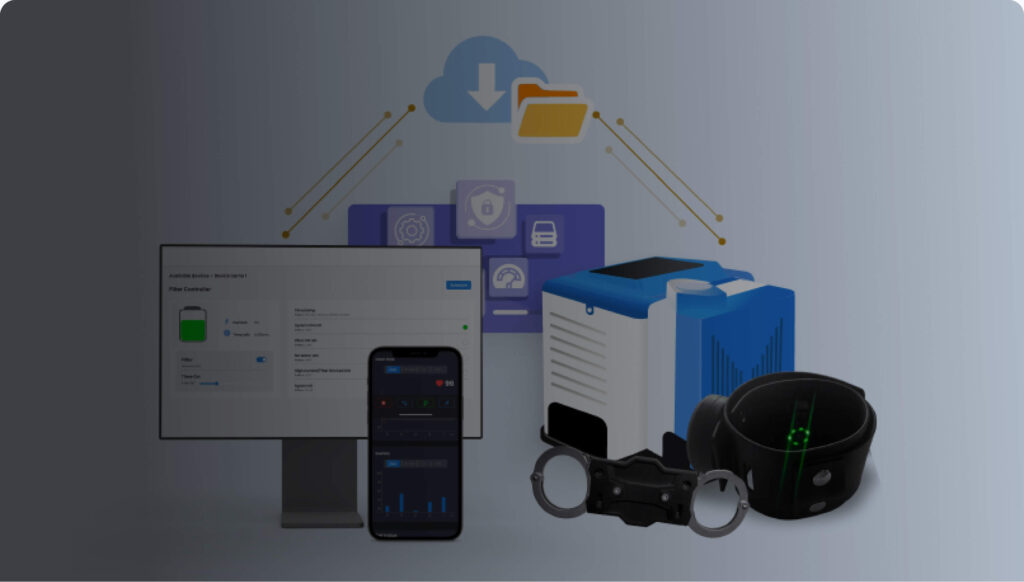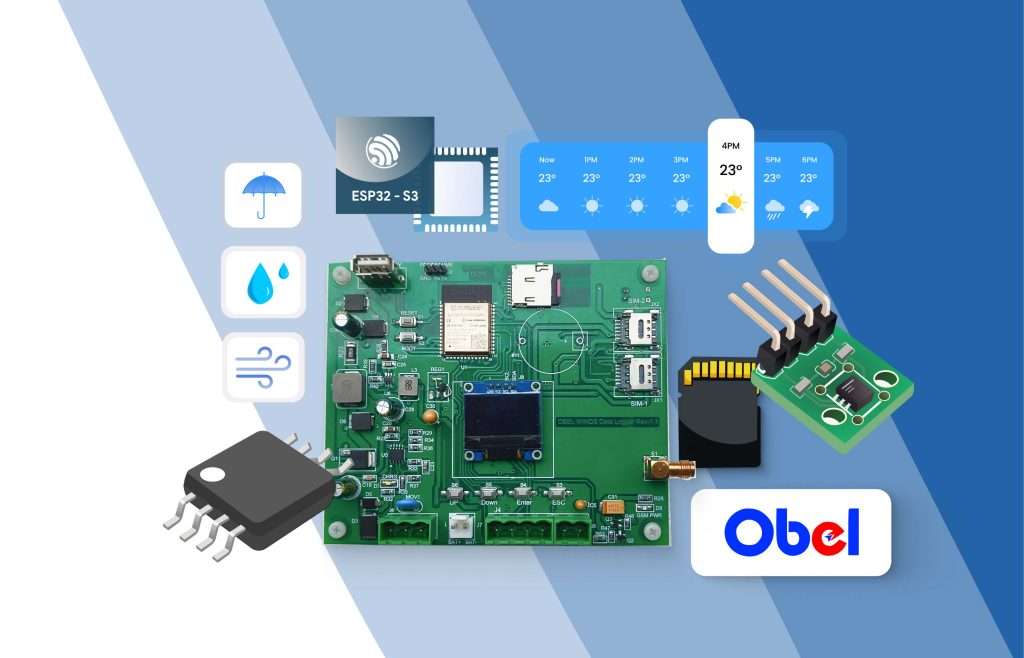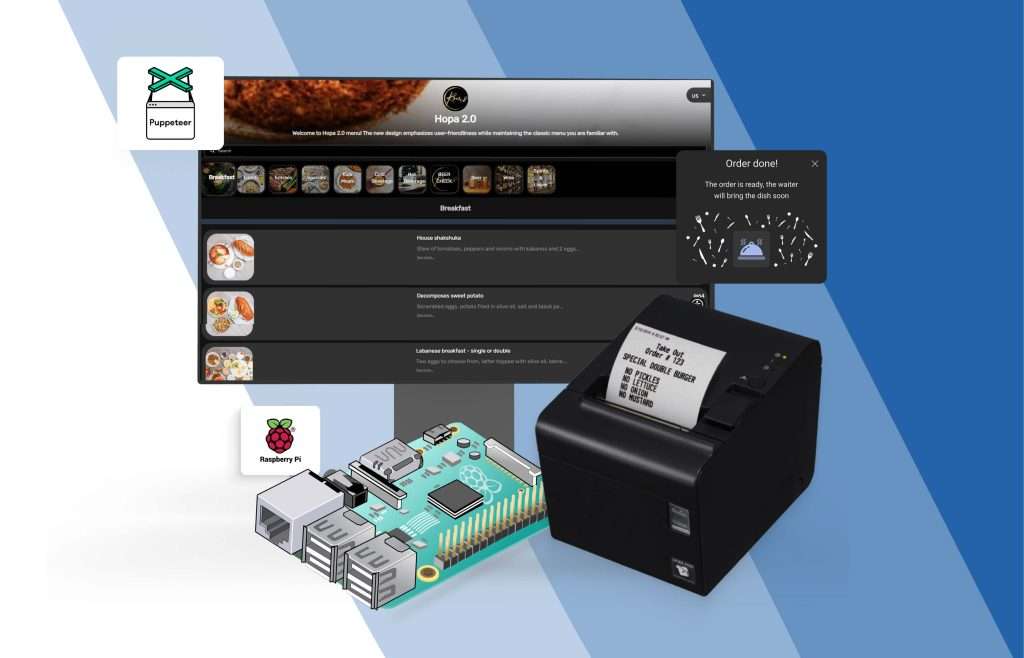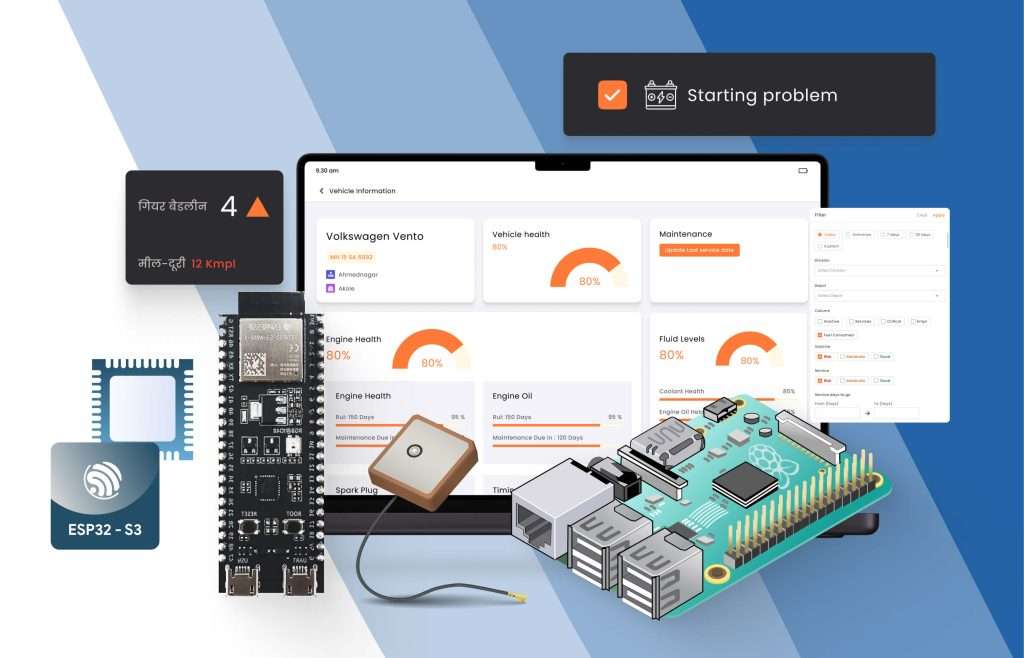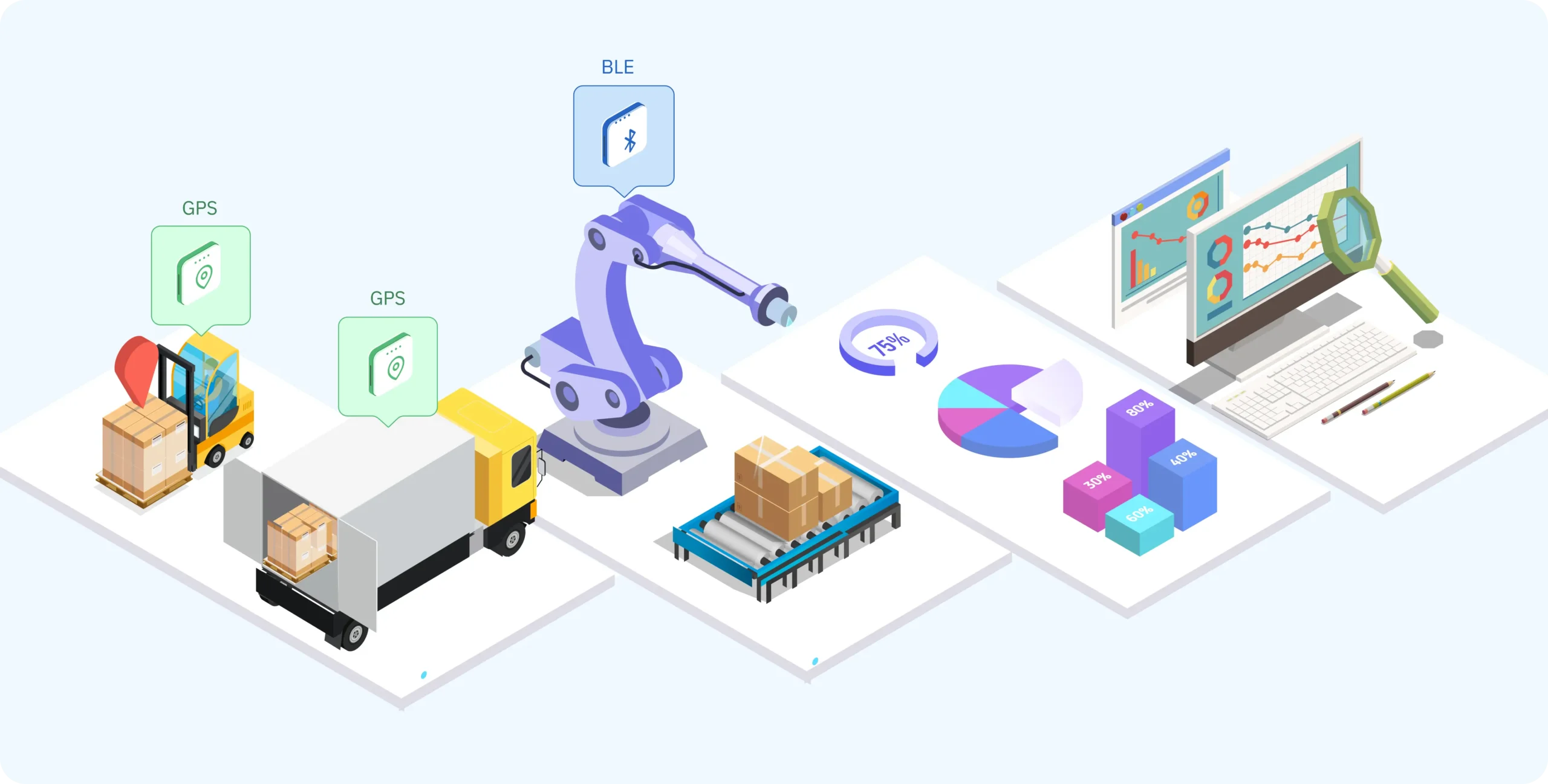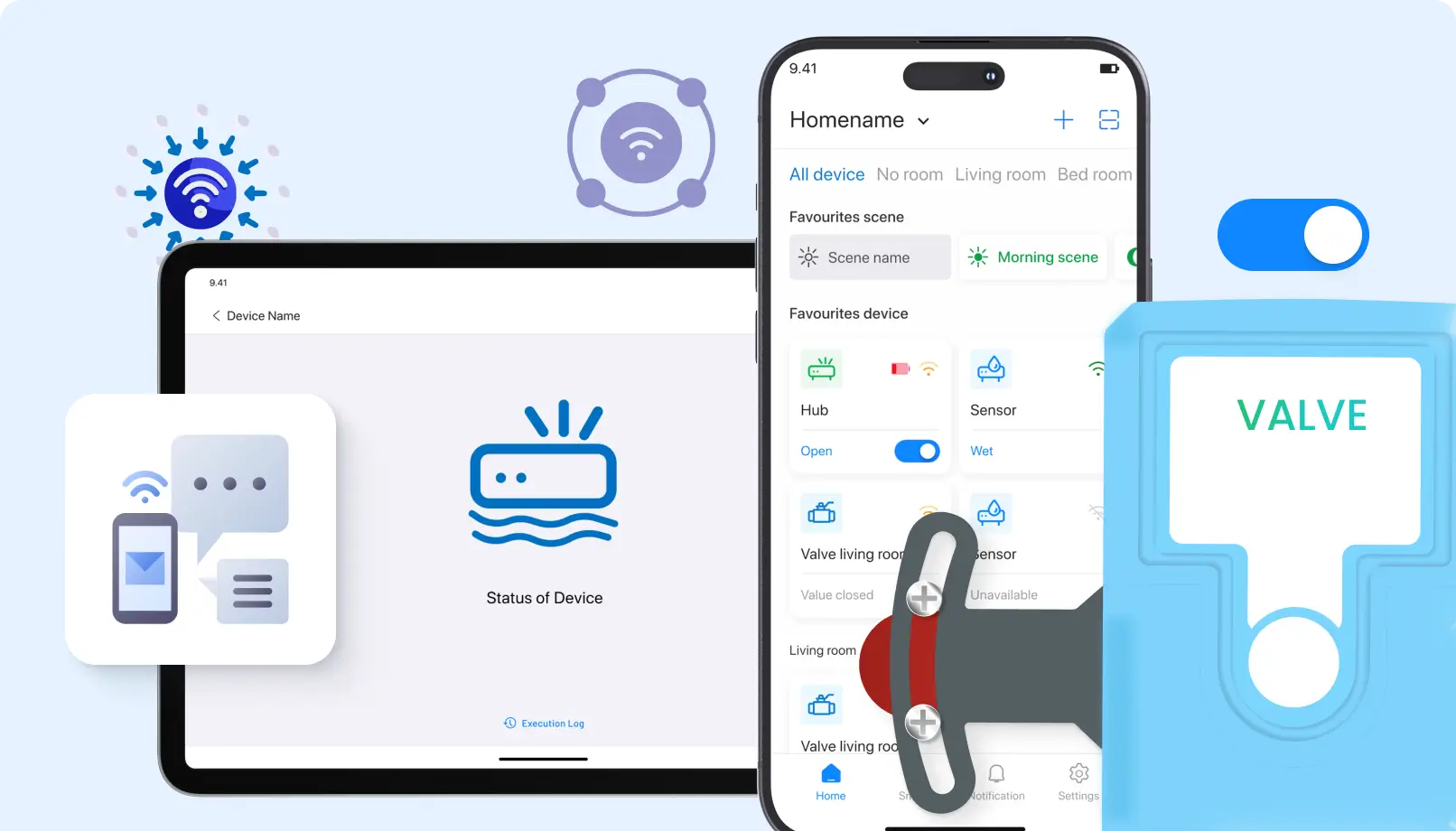OTA Updates accomplished in our real time projects
1. Custody Protect – Smart Handcuff (4Sight Labs, USA)
One of our highlighted projects was the development of Custody Protect, a smart handcuff integrated with ESP32; it was designed to track prisoner heart rates and movement. The devices are used in US Federal Prisons to prevent custody deaths by sending critical alerts to officers within 10 seconds.
OTA Feature in Custody Protect:
We implemented OTA updates via a WiFi Mesh network in this device. The units of ESP32 communicate with each other in regions not covered by the Internet with a view to updating firmware from adjacent peers in the mesh so that devices deep inside the network get the latest security patches and feature enhancements.
This helped us patch the security risks much faster and with more ease, rather than having physical access to all the devices; it kept the prisoner’s monitoring system up-to-date and running smoothly.
2. Obel-Weather Tracking Device (Govt. of India)
Other innovative projects involve the development of a weather-tracking gadget named Obel. Obel used the ESP32s3 data logger to track temperature, humidity, wind speed, and more. It also includes various sensors for measurement in the weather and a GSM protocol to communicate with the servers remotely.
OTA in Obel:
The ability to perform an over-the-air OTA update was a key factor here. Given these weather stations are installed in unapproachable regions of hydrology departments, the prospect of OTA updates ensured continued updated weather data with no costly maintenance visits. This also allowed adding new analytics features a while later to increase the value of the system.
3. Smart Home & Leakage Monitoring (Econet Solutions, Canada)
We also developed the intelligent water management solution for Econet Solutions, wherein OTA updates were required to maintain all leak sensors and valve controllers at peak performance in big buildings. The OTA feature hence would make the system receive updates in real time for improving the detection of leakages to deliver added app features to the user over a period of time.
4. Smart Water Pump (DB2SG, Israel)
In this project, we have developed an application for remotely controlling and monitoring Smart Water Pumps with the ESP32 platform. Clearly, the success of this system would therefore require the possibility of deploying OTA updates that could resolve issues about performance and new features related to water management without necessarily accessing the pumps themselves.
Advantages of OTA Updates in IoT
Remote Device Management
IoT Devices use OTA updates for improving firmware, software, and patches and hence change the device’s functionality without physically touching the device.
Enhanced Security
Security is one of the biggest hurdles in terms of IoT systems implementation. This problem is mainly persistent in isolated or secured device location. OTA updates solve this problem by enabling the developers to update and fix the device’s threat vectors exposed to new attack cycles.
Cost-effectiveness: OTA dispenses with the need for manual intervention; therefore, savings can be achieved through the elimination of physical device retrieval and the dispatch of technicians to perform upgrade purposes.
Scalability: As the ecosystems of IoT grow in size and become increasingly complex, this will be one efficient method for dealing with a large amount of devices. This feature will enable developers to rollout updates to millions of devices all at once in no time.
Improved Customer Experience: By doing so, manufacturers can continue to enhance device functionalities even after a few years by publishing periodic firmware updates, hence offering a better user experience and extending the lives of devices.
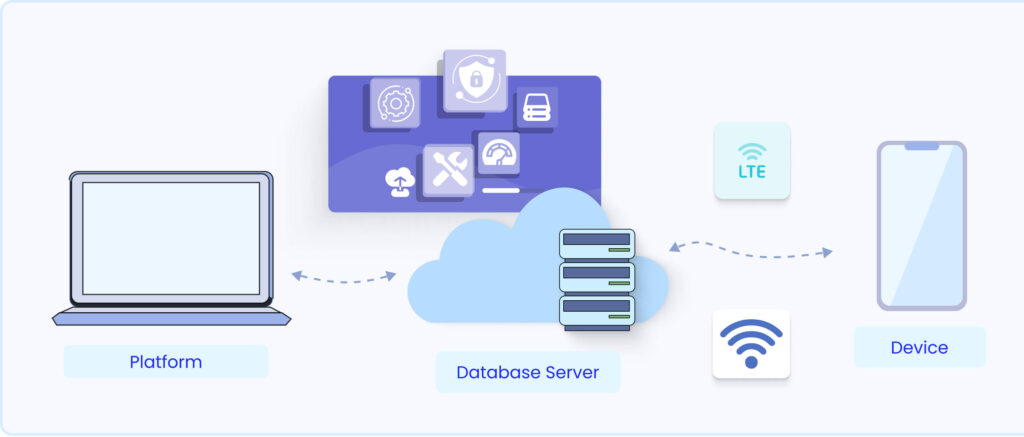
Disadvantages of OTA Updates in IoT
Network Dependency: OTA update requires a strong and stable network connection. In case there is a loss of connectivity during an update, incomplete updates could lead to malfunction or “bricking” of devices.
Power Consumption: The nature of OTA updates tends to be power-consuming for those IoT devices that might be running on batteries. This may lead to exhausting the energy resources, which is quite significant for power-sensitive IoT applications.
Security Risks: Although OTA updates are meant to patch vulnerabilities, poor security during the update process may open a door for malicious attacks. The hackers may intercept or manipulate firmware updates, leading to either data breaches or hijacking of devices.
Large Mesh Network: In large mesh networks, such as WiFi Mesh, the process of identifying and confirming that updates have been appropriately received by each of the devices is complex. Compatibility challenges are not always an easy feat to handle with the transitions between firmware versions.
Overcome Challenges OTA Mesh Networks
Special challenges we had were the implementation of reliable OTA updates over WiFi Mesh Networks and for devices operating in areas with no direct access to the Internet.
We followed the peer-to-peer OTA firmware upgrade model for Custody Protect where each ESP32 device would pass firmware updates to their neighbors till it reached the central node connected to the internet. This worked quite well because, in the absence of traditional connectivity, there would not be any ‘left-behind’ devices w.r.t their firmware updates.
Conclusion
It has turned OTA into the continuously broadening fundament of IoT-a secure, scalable, and cost-effective way to handle remote devices. From smart handcuffs in federal prisons to weather tracking systems and water management solutions, the ability to conduct wireless updates will make sure IoT devices can keep operational, secure, and up-to-date, no matter where they might be.
The different projects in which we have rolled out OTA updates demonstrate to us the revolutionary potential of such updates, and all the more so when combined with innovative networking technologies like WiFi Mesh. As IoT ecosystems are to grow bigger, the role of OTA updates will only emerge as important in ensuring their reliability, security, and long-term viability.
In this respect, it allows organizations to future-proof devices, enhance security, and improve operational efficiencies by introducing OTA updates in IoT systems and offering a world that can get smarter and more connected.
